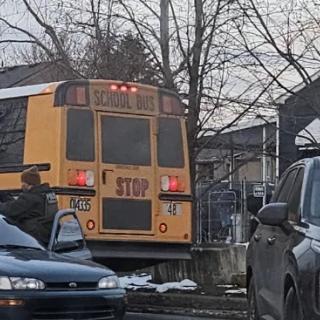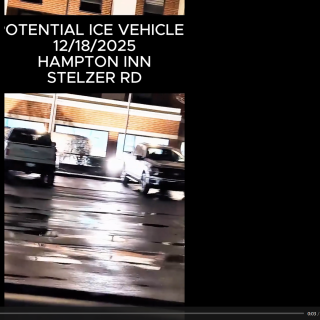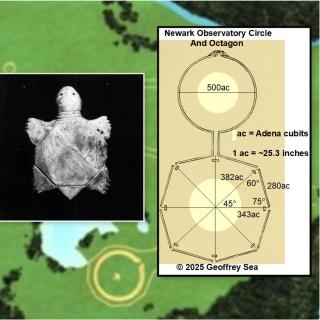Central Ohio is relentlessly expanding outward, leaving behind areas of undeveloped and developed land to essentially waste away; and, if no one acts, a future of super sprawl is in the cards.
The critical question is: Will regional planners take the necessary steps to reign in a metropolis once referred to as “Cowtown?”
The American population is trending toward greater numbers of young adults and retirees (Baby Boomers). Experts say this will spur demand for more and more single-occupant dwellings.
Taking this into consideration is the Mid-Ohio Regional Planning Commission or MORPC which predicts Columbus and its seven surrounding counties could expand another 480 square miles by 2050, adding 500,000 residents and 300,000 housing units. For perspective, 150 square miles (95,000 acres) of urbanized land was added from 2000 to 2010.
The numbers are alarming, and so are the consequences: neighborhoods without community, increased dependence on foreign oil, destruction of natural resources, rising taxes to pay for infrastructure and community services, and the stratification of class and race.
Not sitting idly by is MORPC along with the Columbus 2020 and the Urban Land Institute or ULI Columbus. On November 5 this collaboration unveiled a second draft of their study “insight2050” to 250 elected officials and business people at the Athletic Club.
The study echoes recent trends in regional planning that have called for sustainability by building inward within existing urban areas and ending the era of oversized single-family homes clustered past the outer belt. This “Maximum Infill” scenario de-emphasizes the automobile and highways, while reuniting neighborhoods back to employers, retailers and entertainment.
The study was authored by Peter Calthorpe of San Francisco, who’s internationally recognized for integrating urban revitalization and suburban renewal into one coherent vision.
Calthorpe was at the Athletic Club November 5 along with representatives from the Central Ohio-based mega-retailer, the Limited Brands, which helped finance and build Easton Town Center in northeast Columbus.
In fact, the Limited Brands, owned by Les Wexner, is also helping to finance insight2050. The relationship makes for questionable bedfellows considering Wexner’s Easton meant the death knell for central city shopping centers, say critics, while his homespun McMansion-esque New Albany chewed up countless acres of farmland.
Thus what doesn’t surprise some longtime community planners is the ‘disclaimer’ this private and public collaboration keep making for insight2050.
Even though taxpayers were billed for most of the study’s $500,000 price tag, the collaboration says in no way is insight2050 a plan for how the region’s 200 jurisdictions should zone their land. And developers or retailers aren’t beholden to insight2050, either. It is simply a study, they insist.
Making this loud and clear at the Athletic Club to the Columbus Dispatch was Yaromir Steiner, CEO of Steiner & Associates, which helped develop Easton Town Center. Coincidentally, Steiner is the chairman of the insight2050 steering committee.
“It’s simply an indicator of what the facts are, whether we listen to them or not,” he told the Dispatch.
William Dodson is a well-respected northeast Columbus community leader who scoffs at insight2050. He says it’s the same old, same old. Because, like similar regional studies of the past, it’s missing one critical factor.
“None of these plans carry an implementation strategy, there’s no commitment to doing anything even though they’ve catalogued all the problems,” says Dodson, director of the Dayspring Christian Community Development Corporation, a non-profit that promotes small business development and affordable housing for northeast Columbus.
MORCP spokesperson Kerstin Carr says insight2050 “can assist our communities to have objective, data-driven discussions about our region’s future.” She says some local suburbs, such as Dublin and New Albany, are utilizing the data “to inform their planning processes,” but understand “this is not a regional plan but simply a regional analysis.”
Dodson calls the intersection of Agler Road and Cassady Avenue the heart of his community, where the residents are mostly middle-class and working class African-Americans. He’s been hounding retail big-wigs for years (without much success) to invest in his neighborhoods, which even he admits were left in the dust by urban sprawl years ago.
There are 20 acres of developable land caddy corner from Agler and Cassady, he says, while 9,000 new market rate homes and apartments were built in northeast Columbus before the housing bust hit in 2009.
“The Dispatch said there’s no developable land in Columbus, which is not true. There is simply not a vision for an area like this. This is one of the few places in Columbus where you could do something creative from the ground up,” he says.
He admires the revitalization of Italian Village, Franklinton and Weinland Park, but the extra costs are steep considering “you have to tear down and dig up first.”
Incessantly, Dodson has sought a bank branch near Agler and Cassady. He was on the local community board for Fifth Third Bank when it acquired a grant from the Treasury Department to research and pin-point locations for communities lacking brick-and-mortar bank branches.
“Their solution was very creative – put an ATM at the corner of Agler and Cassady,” he says. “Later I was informed that ATM is one of Fifth Third Banks’ top-5 used ATMs in the Columbus market. Top five. If there was ever a market for a bank branch, that’s the place.”
Fifteen years ago Mayor Coleman attended a local community celebration, and as soon as he got out of his car, says Dodson, the mayor was alarmed there were no sidewalks connecting homes and neighborhoods, or shelters for bus stops.
“He told me, ‘We need to do something to fix Agler Road,’” says Dodson. “Fifteen years later, nothing has happened.”
There’s simply no commitment to the neighborhood, by private or public leadership, he says.
“There’s great opportunity here, even Ray Charles can see it,” says Dodson wryly.



